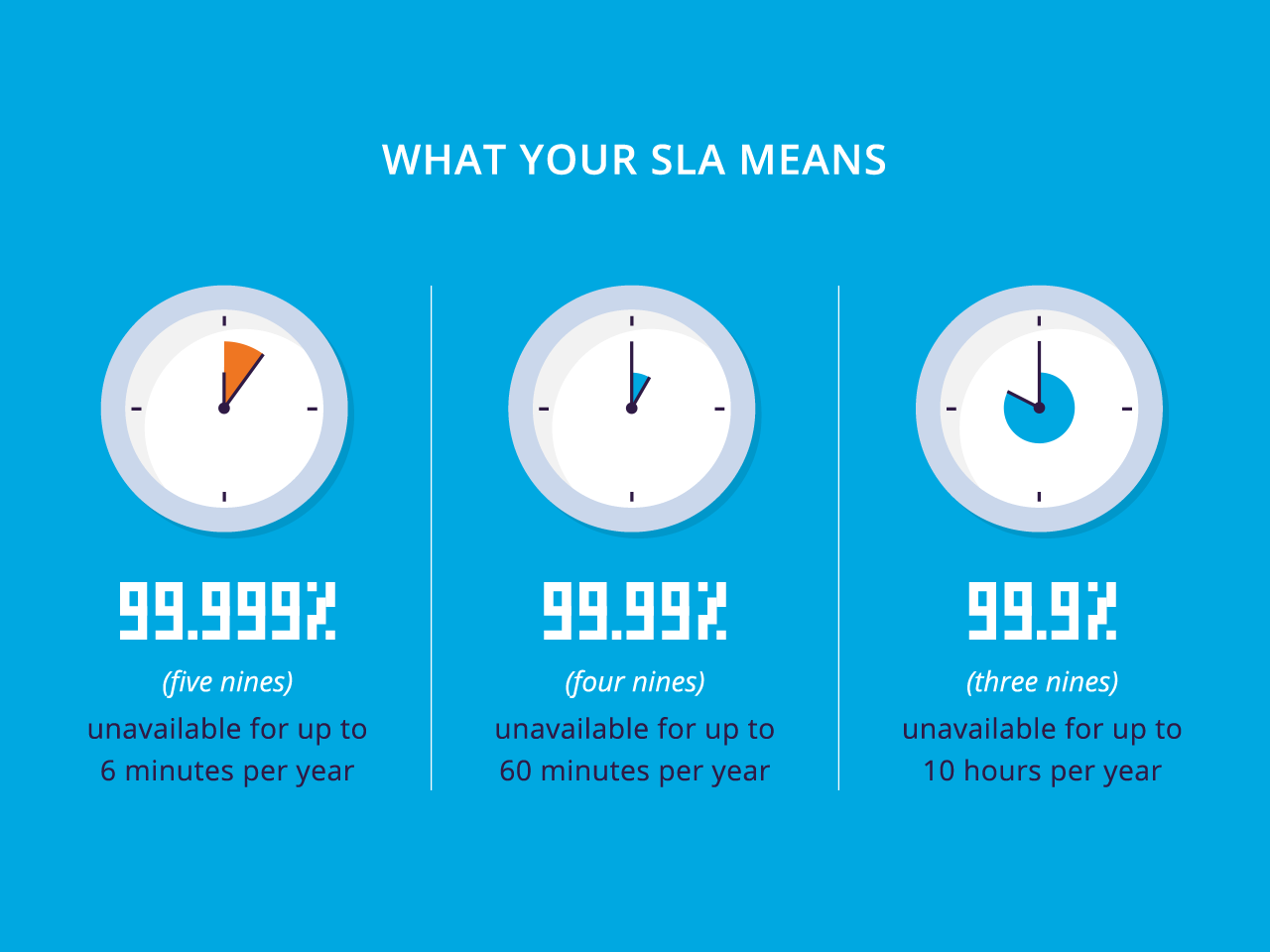DevOps teams are at the forefront when it comes to bringing the latest cloud computing apps to market. However, innovation and convenience isn’t everything. SaaS organizations also need to provide reliable uptime, improved performance and security assurance from costly cyber attacks.
To find out how SaaS organizations meet their SLAs with customers and the challenges they face, we worked with Pagerduty and DevOps.com to survey nearly 400 industry DevOps professionals responsible for engineering, product development, network ops and IT. More than 75 percent of our respondents have worked in the tech field more than five years. Fifty-five percent of them have 10+ years of experience under their belts. Data from our analysis is presented in the infographic “Are You SLAcking Off?” below.
Join us for an upcoming webinar, “6 Ways to Improve Your Site Availability by 10x” on May 24, 2017, for tips on how you can improve uptime and boost customer satisfaction.
Availability and the “Five Nines” Effect
We found that only seven percent of sites offer 100 percent uptime. Consequently, users experience and have to be prepared for a certain amount of downtime.
SaaS developers use a number of tools to monitor website availability. Most of the people we surveyed used the following tools
- New Relic (27 percent)
- Pingdom (11 percent)
- Solar Winds (10 percent)
Other tools used were Datadog, LogicMonitor, TrueSight Pulse, Scalyr and Pingometer. More than a third of ops teams (34 percent) used tools to keep track of the health of their sites and apps but did not name them.
SLA and Site Status
Almost half (46 percent) of the companies surveyed delivered, at best, four nines (99.99 percent) uptime over the past year. This meant that their sites were offline for more than one hour per year. The rest of the companies surveyed (54 percent) delivered uptime of three nines and less indicating their sites were unavailable for up to 10 hours a year.

Without a status page to report on potential downtime, customers are left to wonder what’s going on. This can risk brand reputation and may cost organizations money in the long run. Of those surveyed, more than half (53 percent) of companies said they did not have a status page that shows website availability or downtime. Nearly 10 percent used Statuspage.io, while 23 percent of respondents reported using their own status page software.

To assuage the damage of missing their SLA, 25 percent of these companies offered some form of credit or refund to customers for the inconvenience.
Here’s how the tools for measuring and monitoring website performance stacked up:
- New Relic (43 percent)
- Pingdom (23 percent)
- Zabbix (19 percent)
- AppDynamics (17 percent)
Armed with analytics organizations use the data they discover to improve user experience by implementing technologies that accelerate their sites. In an effort to improve site performance, 80 percent of the companies surveyed use load balancing services. Fifty-eight percent use database caching, and 55 percent use a CDN.
Going Mobile—When Performance Is Critical
Unreliable availability is the main thing that deters online customers, and overall poor site performance is a close second. Sixty-two percent of users will leave a site if a page doesn’t complete loading in five seconds. This data is especially relevant for users of personal devices such as smartphones and tablets.
Sixty-seven percent of the companies represented in our survey do not have separate performance goals for their mobile platform. This presents an opportunity for organizations to optimize their mobile experience because 31 percent of all website traffic now comes from mobile devices. Currently 20 percent of companies have mobile targets, giving them a leg up on the competition.

Security—Everyone’s Concern
Security issues can make or break the user experience, yet many SaaS organizational charts do not address specifically which in-house team owns the responsibility. The reality is that security is everyone’s concern.
Our survey shows that organizations that put an emphasis on security generally spread the responsibility equally across
- CISO (25 percent)
- DevOps (25 percent)
- Engineering (14 percent)

Not keeping a website safe from online attacks can be costly. Forty-nine percent of all DDoS attacks, for example, last between 6–24 hours. It costs roughly $40,000 per hour to mitigate the damage which can add up.
Costs aren’t limited to IT, either. Security breaches also have a large impact on security and risk management, sales and customer service.
To learn how you can maximize your uptime, improve site performance across all devices and secure your site from any costly or embarrassing attacks, visit Incapsula. You can also join us for a live webinar, “6 Ways to Improve Your Site Availability by 10x” on May 24, 2017, for tips on how you can improve uptime and boost customer satisfaction.

Try Imperva for Free
Protect your business for 30 days on Imperva.
![What SaaS DevOps Teams Are Saying About SLA, Availability and Performance [Survey]](/wp-content/themes/impv-blog/dist/imgs/default-thumbnail/app-security.jpg)












